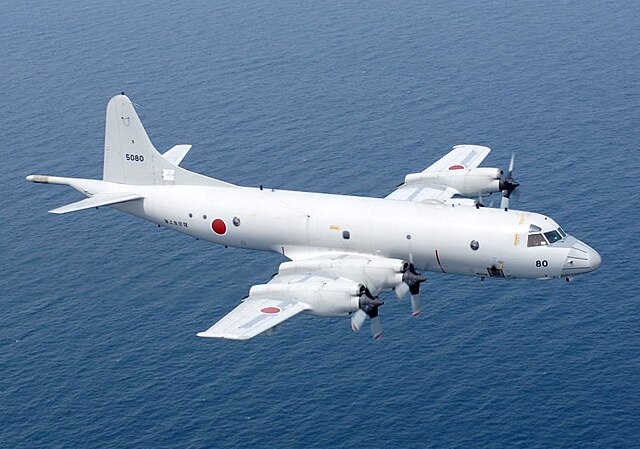The Lockheed WP-3D Orion is a highly modified P-3 Orion used by the Aircraft Operations Center division of the National Oceanic and Atmospheric Administration (NOAA). Only two of these aircraft exist, each incorporating numerous features for the role of collecting weather information. During the Atlantic hurricane season, the WP-3Ds are deployed for duty as hurricane hunters. The aircraft also support research on other topics, such as Arctic ice coverage, air chemistry studies, and ocean water temperature and current analysis.
Lockheed WP-3D Orion
Lockheed WP-3D Orion in flight with NOAA's newer paint scheme
The Lockheed P-3 Orion is a four-engined, turboprop anti-submarine and maritime surveillance aircraft developed for the United States Navy and introduced in the 1960s. Lockheed based it on the L-188 Electra commercial airliner; it is easily distinguished from the Electra by its distinctive tail stinger or "MAD" boom, used for the magnetic anomaly detection (MAD) of submarines.
Lockheed P-3 Orion
The first Orion prototype was a converted Lockheed Electra.
P-3s from Japan, Canada, Australia, Republic of Korea, and the United States at MCAS Kaneohe Bay during RIMPAC 2010
A USN P-3A of VP-49 in the original blue/white colors






